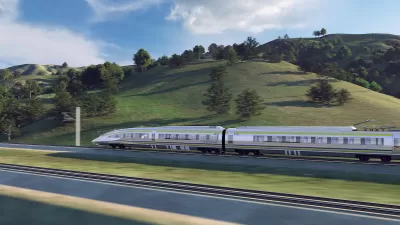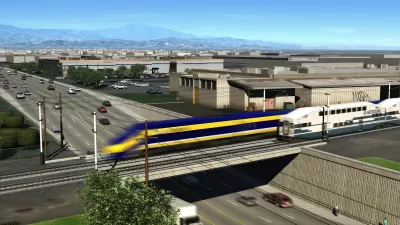The San Jose to Merced Project Section Final Environmental Impact Report/ Environmental Impact Statement could be approved by April 21.

The California High-Speed Rail Authority (CAHSRA) on February 25 released the Final Environmental Impact Report/Environmental Impact Statement for a key section of the California High-Speed Rail Project in Northern California.
The EIR/EIS for the approximately 90-mile section of the route connecting San Jose to Merced Project in Northern California will be under consideration for approval at a two-day board meeting on April 20 and 21, according to a press release from CAHSRA published on February 25.
"In the San Jose to Merced Project Section, high-speed trains will travel through or near the cities of Santa Clara, San Jose, Morgan Hill, Gilroy and Los Banos, connecting Silicon Valley and the Central Valley," according to the press release. "The proposed preferred alternative alignment would include upgrading existing rail lines between San Jose and Gilroy and constructing a new high-speed rail alignment with more than 15 miles of tunnels through Pacheco Pass in the Diablo Range."
Roger Rudick had the scoop on the final EIR/EIS in an article for Streetsblog California, calling the San Jose to Merced Project Section an "all-important connection." Boris Lipkin, Northern California regional director for the project, is quoted in the article calling the EIR/EIS a big milestone for the project. Rudick's coverage includes more detail on the recent history of planning and politics on the project.
FULL STORY: California High-Speed Rail Releases Final Environmental Studies to Connect Silicon Valley and Central Valley

Study: Maui’s Plan to Convert Vacation Rentals to Long-Term Housing Could Cause Nearly $1 Billion Economic Loss
The plan would reduce visitor accommodation by 25,% resulting in 1,900 jobs lost.

North Texas Transit Leaders Tout Benefits of TOD for Growing Region
At a summit focused on transit-oriented development, policymakers discussed how North Texas’ expanded light rail system can serve as a tool for economic growth.

Why Should We Subsidize Public Transportation?
Many public transit agencies face financial stress due to rising costs, declining fare revenue, and declining subsidies. Transit advocates must provide a strong business case for increasing public transit funding.

How Community Science Connects People, Parks, and Biodiversity
Community science engages people of all backgrounds in documenting local biodiversity, strengthening connections to nature, and contributing to global efforts like the City Nature Challenge to build a more inclusive and resilient future.

Alabama: Trump Terminates Settlements for Black Communities Harmed By Raw Sewage
Trump deemed the landmark civil rights agreement “illegal DEI and environmental justice policy.”

Dear Tesla Driver: “It’s not You, It’s Him.”
Amidst a booming bumper sticker industry, one writer offers solace to those asking, “Does this car make me look fascist?”
Urban Design for Planners 1: Software Tools
This six-course series explores essential urban design concepts using open source software and equips planners with the tools they need to participate fully in the urban design process.
Planning for Universal Design
Learn the tools for implementing Universal Design in planning regulations.
City of Santa Clarita
Ascent Environmental
Institute for Housing and Urban Development Studies (IHS)
City of Grandview
Harvard GSD Executive Education
Toledo-Lucas County Plan Commissions
Salt Lake City
NYU Wagner Graduate School of Public Service





























